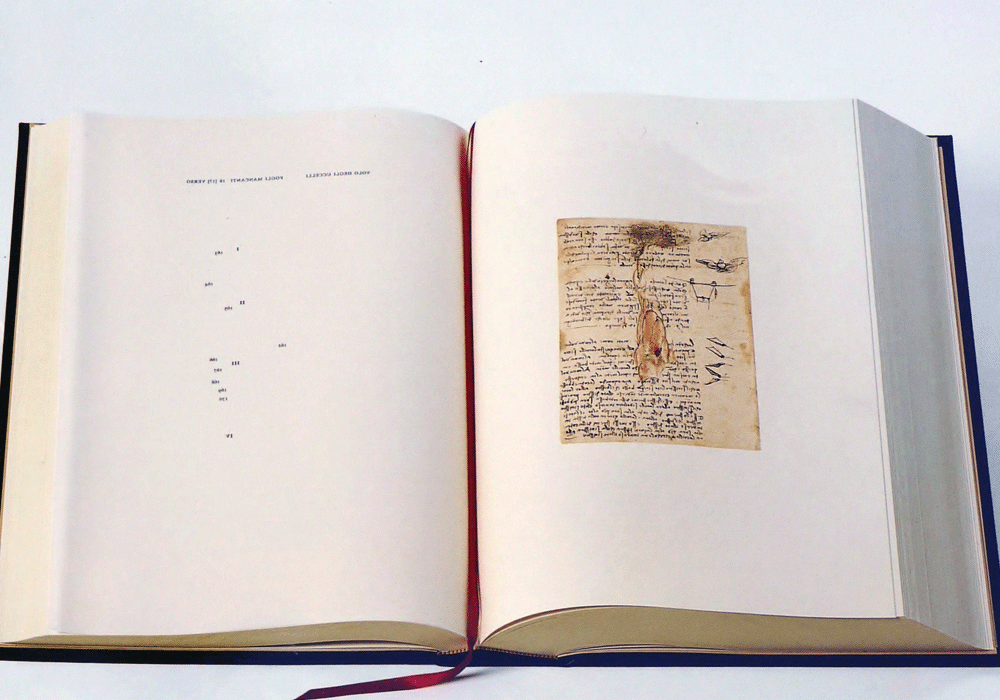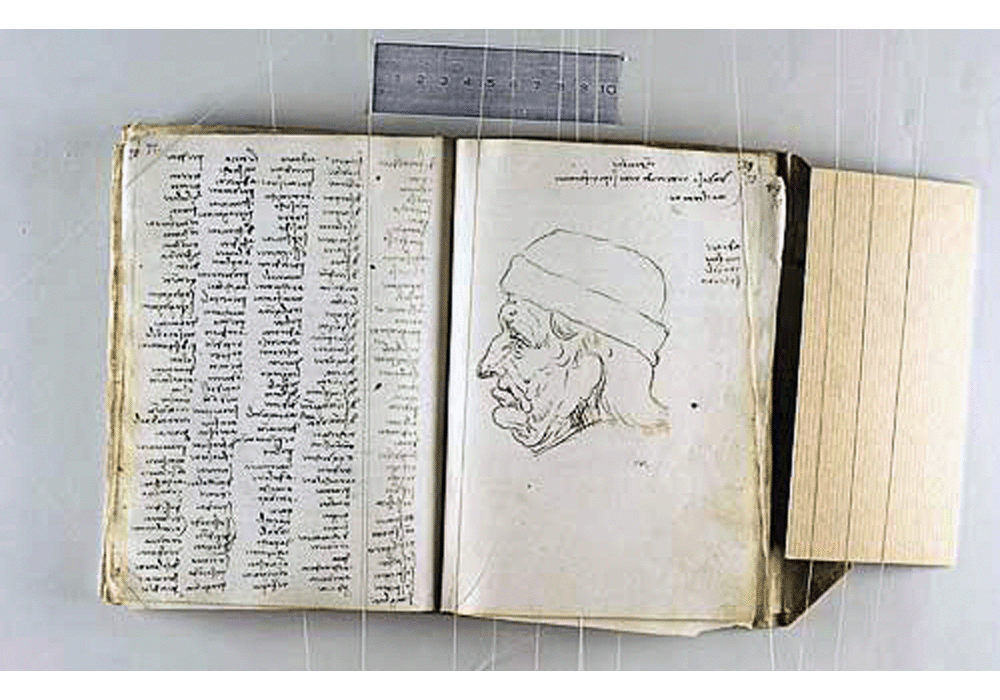|
|
|
| Seguir @vicentgarciaedi Twittear |
|
vgesa |

|
|
|
Synopsis: These Codices deal with different topics but probably represent the most evident extremes of Leonardo’s multiform thirst for knowledge. Codex Trivulzianus and Codex “on flight of birds” are now collected up in one volume. When in Italy people tented to integrally publish the Leonardo’s manuscripts, these Codices were the first to be printed in a facsimile copy. Until this time, the scholars preferred to put them in order by topics and decontextualize a specific material in order to create publications with an apparent homogeneous content, for example the Treatise on Painting. Codex on the flight of birds: This Codex is being held in the Royal Library of Turin and it is composed by 17 pages (21x15 cm) compared to the 18 pages that may be dated approximately to 1505. Leonardo made "the flight of birds" the basis for his mechanical approach and he studied the function of the wing, the air resistance, the winds and the currents. The Codex on the flight of birds was written by Leonardo in 1505 and the complicated and fantastic events are related by Giovanni PIumati and Enrico Carusi in the pages before the reproduction of the tables. It is essentially a treatise which deals with the watching of birds flight in order to realize the human flight; flying was one of the greatest dream of the ancient man. The edition that we have published, thanks to the Russian Patron Teodoro Sabachnikoff, uses the critic transcription of Giovanni Piumati. The work, printed in 1893 in Paris, is extraordinary for the great care of the text and for the quality of the reproductions. The “missing sheets” are now rejoined to the original manuscript in the Royal Library of Turin and they were transcribed by Enrico Carusi, who was the author of Leonardo da Vinci’s voice in the Italian Encyclopaedia which was founded by Giovanni Treccani. Codex Trivulzianus: Since the second half of XVIII century, the Codex Trivulzianus is being held in the Trivulziana Library of the Sforzesco Castle of Milan. It is composed by a manuscript of 55 papers (20.5*14 cm) but originally it was composed by 62 papers. There are several pages which refer to military and religious architecture studies of Leonardo and also to his self-teaching studies aimed at improving his literary education. This code was drawn up by Leonardo between 1485 and 1490. It is unique compared to the others Leonardo’s Codices and it has a peculiarity: 51 tables, more than half of 94 reproducible tables, are composed by lists of Latinism. Often, but not always, there is written also the mean of these words that Leonardo transcribed from books that he was reading. Leonardo wrote the mean of some words also in other manuscripts, for example in Codex Atlanticus. Only in the Codex Trivulzianus this activity seems to be a program and some scholars, Giovi in particular, believed that he thought about a kind of a Vulgar Italian vocabulary. There are also other pages with some sketches which develop military engineering and architectonic topics, above all studies for the Milan Dome Cladding. Our edition is very prestigious and it was printed in 1891 in Milan. |
IBIC Rating: |
||
|
AC HISTORIA DEL ARTE / ESTILOS DE ARTE Y DISEÑO |
1D EUROPA
|
|







